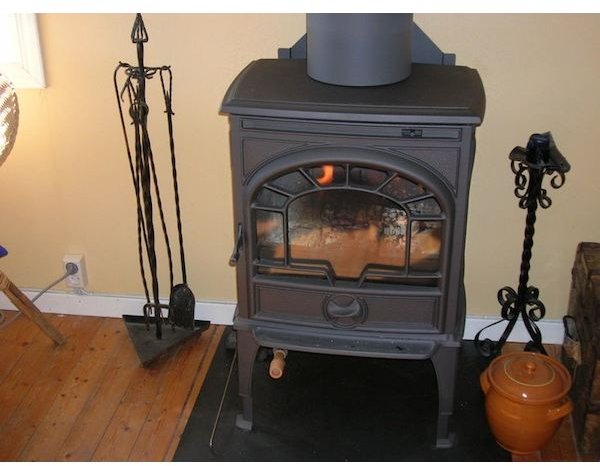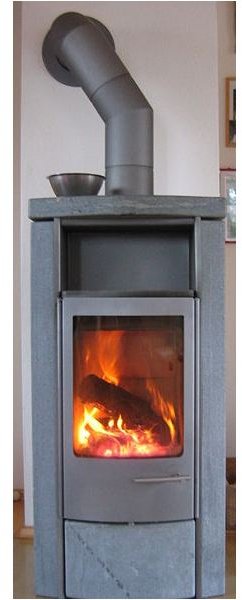How to Install a Wood Burning Stove
According to the National Ag Safety Database, a wood stove can produce interior temperatures surpassing 1,000 degrees F and surface temperatures surpassing 400 degrees F, while a chimney fire in a wood burning stove can reach temperatures of over 2,000 degrees F. But while wood stove heat may increase fire risk over other forms of home heating, wood stoves lower heating bills and you can do a great deal to reduce the risk by learning how to install a wood burning stove safely. To ensure your protection, take the following safety precautions during your wood stove installation.
Select only a safety-tested and certified wood stove. Only purchase a wood stove that has been certified by a recognized safety authority, such as the National Fire Protection Association (NFPA) or Underwriter’s Laboratories (UL).
Read the manufacturer’s directions carefully. Not all wood burning stoves are built alike and it’s important to be clear on your particular wood stove’s requirements and limitations. For example, you do not want to accidentally block a vent when you place your wood stove because you didn’t know the vent was there. The metals in different kinds of wood stoves heat up and radiate heat differently, which means different wood stoves will need to be placed a different minimum distance from the walls, walkways and other objects.
Know your local building codes, as well, and abide by them. You could lose your insurance, face a steep penalty and possibly not be able to sell your home with the wood stove installed in a way that does not abide by building codes. Some jurisdictions may actually demand that you have your wood stove installed by a professional and/or inspected by the building or fire inspector before use. Take all of these requirements seriously. They are not suggestions, and treating them as such could come around to haunt you later.
Mark placement of the wood stove, allowing for sufficient space on all sides from combustible materials. This includes walls, walkways, furniture and floors.
Before placing the stove, prepare the surface. That means laying down sufficient non-combustible material over the floor and along the walls where the stove will be placed.
As mentioned above, you can find the recommended clearances for most wood stoves listed by the manufacturer or (the authority that trumps the other sources) local building codes. If not, you can go by the following recommendations from the NFPA:
With no protection between it and combustible surfaces, radiant wood stoves should be spaced 36" away, circulating wood stoves should be spaced 12" away and stovepipes should be spaced 18" away. These numbers can be cut down to half their number with ¼" non-combustible board installed between it and any combustible surfaces and cut to a third their number with 28-gauge sheet metal put up as a barrier. Avoid asbestos millboard as your barrier, as it poses health and safety hazards of its own.
As for floors, unless the wood stove you choose has at least 4"-legs, prepare the floor beneath the stove with a non-combustible layer of brick, tile or stone. Make sure the materials are placed so that air can still circulate beneath the stove. Masonry bricks are good for this, because you can turn them to face the side. You can find clearance recommendations from the same selection of sources: the manufacturer, local building codes or the NFPA.

Attach to the chimney. The type of chimney you use is as significant a factor in the safety of your home wood heating system as the wood stove itself. Safety and building authorities certify chimneys as they do stoves. Different chimneys have different advantages and disadvantages beyond safety, but options include factory-built metal chimneys, masonry chimneys and existing fireplace chimneys. For safety, a chimney with its own damper is a good idea, even if your wood stove already has its own damper, as a chimney damper helps control chimney fires should they occur. When you connect the stove to the chimney use heavy gauge pipe. Use 3 sheet metal screws to secure each of the joints. Make sure the top of the chimney extends a minimum of two feet higher than anything else on the roof for 10’ on all sides.
Consider running a duct from outside to the front of the stove. This provides necessary combustion air for your fires and keep drafts from entering the house through other leaks and openings.
Use only new pipe and fittings. A used wood stove is one thing (ideally a bargain!) but used hardware to install it with is another (at best inefficient, at worst, plain dangerous!)
Check for air tightness. After you install your wood stove, check it carefully for drafts. The more airtight your stove, the more efficiently and effectively it will run and, most importantly, the safer it will operate.
After installation, check all the hardware carefully. Be sure the door latch shuts securely. Check the joints on all the pipes to make sure they’re sealed together tightly.
Install smoke detectors and fire extinguishers nearby and throughout the home.
Install a stovepipe thermometer to help you keep chimney flue temperatures in check.
Prepare your family with a fire evacuation plan and practice it periodically. A solid fire escape plan has two points of exit from every room in the home.
Remember, learning how to install a wood burning stove properly is only one factor in the overall safety of your home wood heating system. Safety considerations extend throughout the maintenance and use of your wood burning stove as well, including:
- burning dry and seasoned wood only
- cleaning and inspecting it before each heating season begins
Thankfully, wood stove safety and wood stove efficiency go hand-in-hand.
References
National Ag Safety Department: Proper Installation, Operation and Maintenance of a Wood Stove https://nasdonline.org/document/333/d000132/proper-installation-operation-and-maintenance-of-a-wood.html
American National Property and Casualty Company: Wood Stove Safety https://www.anpac.com/safety/home/iii/wood\_stoves.pdf
U.S. Fire Administration: Fireplace and Home Fire Safety https://www.usfa.dhs.gov/citizens/home\_fire\_prev/heating/fireplace.shtm
North Tongass Volunteer Fire Department: Wood Stove Safety https://www.northtongassfire.org/documents/woodstovesafety.pdf
Images:
Wood Stove Husum; Hase (Wikimedia Commons) https://commons.wikimedia.org/wiki/File:Hase\_Husum.jpg
A Wood Stove; Notwist (Wikimedia Commons) https://commons.wikimedia.org/wiki/File:Braskamin.JPG
